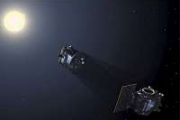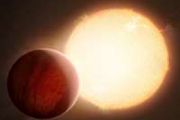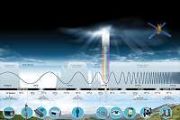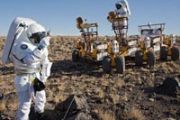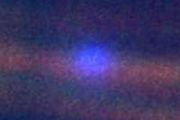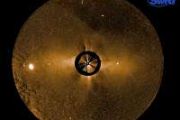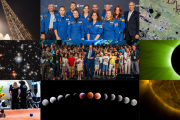
Copernical Team
NASA returns Hubble Space Telescope to science operations
 NASA has returned the science instruments on the Hubble Space Telescope to operational status, and the collection of science data will now resume. This will be the first science data collected since the payload computer experienced a problem on June 13, which placed the instruments in a safe configuration and suspended science operations.
"Hubble is an icon, giving us incredible insight in
NASA has returned the science instruments on the Hubble Space Telescope to operational status, and the collection of science data will now resume. This will be the first science data collected since the payload computer experienced a problem on June 13, which placed the instruments in a safe configuration and suspended science operations.
"Hubble is an icon, giving us incredible insight in First measurement of isotopes in atmosphere of exoplanet
 An international team of astronomers have become the first in the world to detect isotopes in the atmosphere of an exoplanet. It concerns different forms of carbon in the gaseous giant planet TYC 8998-760-1 b at a distance of 300 light years in the constellation Musca (Fly).
The weak signal was measured with ESO's Very Large Telescope in Chile and seems to indicate that the planet is relat
An international team of astronomers have become the first in the world to detect isotopes in the atmosphere of an exoplanet. It concerns different forms of carbon in the gaseous giant planet TYC 8998-760-1 b at a distance of 300 light years in the constellation Musca (Fly).
The weak signal was measured with ESO's Very Large Telescope in Chile and seems to indicate that the planet is relat Billionaires in space: Jeff Bezos' Blue Origin touts rocket safety
 As Jeff Bezos prepares to become the second billionaire to blast into space on his own company's rocket next week, his Blue Origin is touting the safety of its rocket system.
The New Shepard suborbital rocket is scheduled for liftoff at 9 a.m. EDT Tuesday from the company's Corn Ranch launch site 160 miles east of El Paso, Texas - pending any weather or technical delays.
Blue Or
As Jeff Bezos prepares to become the second billionaire to blast into space on his own company's rocket next week, his Blue Origin is touting the safety of its rocket system.
The New Shepard suborbital rocket is scheduled for liftoff at 9 a.m. EDT Tuesday from the company's Corn Ranch launch site 160 miles east of El Paso, Texas - pending any weather or technical delays.
Blue Or Beyond Visible Noise: the 'sounds of space' on film
 Space scientists, spoken word artists and filmmakers teamed up to create a new short film, 'Beyond Visible Noise', that will launch at the National Astronomy Meeting on Tuesday 20 July. Dr Martin Archer of Imperial College London will describe how scientists and poets worked together to take the incredibly weak sound waves found in space and convert them to the audible content that features in t
Space scientists, spoken word artists and filmmakers teamed up to create a new short film, 'Beyond Visible Noise', that will launch at the National Astronomy Meeting on Tuesday 20 July. Dr Martin Archer of Imperial College London will describe how scientists and poets worked together to take the incredibly weak sound waves found in space and convert them to the audible content that features in t Suborbital aerospace plane makes maiden flight
 China carried out the maiden flight of the prototype of a reusable suborbital aerospace plane in North China's Inner Mongolia autonomous region on Friday, according to China Aerospace Science and Technology Corp, the country's major space contractor.
The unnamed prototype was lifted by a carrier rocket at the Jiuquan Satellite Launch Center and flew for a certain period of time before maki
China carried out the maiden flight of the prototype of a reusable suborbital aerospace plane in North China's Inner Mongolia autonomous region on Friday, according to China Aerospace Science and Technology Corp, the country's major space contractor.
The unnamed prototype was lifted by a carrier rocket at the Jiuquan Satellite Launch Center and flew for a certain period of time before maki The role of the COSPAR Panel on Planetary Protection
 COSPAR, the Committee on Space Research, and its Panel on Planetary Protection (PPP) have recommended on 18 May 2021 that missions to the Moon would remain under the general terms of COSPAR Planetary Protection Policy Category II, but have added two sub-categories for lunar surface missions.
Category IIa concerns all missions to the surface of the Moon whose nominal mission profile does no
COSPAR, the Committee on Space Research, and its Panel on Planetary Protection (PPP) have recommended on 18 May 2021 that missions to the Moon would remain under the general terms of COSPAR Planetary Protection Policy Category II, but have added two sub-categories for lunar surface missions.
Category IIa concerns all missions to the surface of the Moon whose nominal mission profile does no Thruster research to help propel spacecraft
 Faster space manoeuvres and safer, more sustainable, propellants may soon be possible thanks to a new three-year partnership between The Australian National University and French propulsion company ThrustMe.
Led by the ANU Research School of Physics, the joint research program will explore how electrothermal plasmas can help advance space propulsion technology.
ANU researcher Associa
Faster space manoeuvres and safer, more sustainable, propellants may soon be possible thanks to a new three-year partnership between The Australian National University and French propulsion company ThrustMe.
Led by the ANU Research School of Physics, the joint research program will explore how electrothermal plasmas can help advance space propulsion technology.
ANU researcher Associa Thales Alenia Space to provide the first two pressurized modules for Axiom Space Station
 Thales Alenia Space, Joint Venture between Thales (67%) and Leonardo (33%), and Axiom Space of Houston, Texas (USA), have signed the final contract for the development of two key pressurized elements of Axiom Space Station - the world's first commercial space station. Scheduled for launch in 2024 and 2025 respectively, the two elements will originally be docked to the International Space Station
Thales Alenia Space, Joint Venture between Thales (67%) and Leonardo (33%), and Axiom Space of Houston, Texas (USA), have signed the final contract for the development of two key pressurized elements of Axiom Space Station - the world's first commercial space station. Scheduled for launch in 2024 and 2025 respectively, the two elements will originally be docked to the International Space Station Boeing's Starliner secured atop Atlas V rocket for second uncrewed launch
 Boeing's CST-100 Starliner spacecraft was secured atop a United Launch Alliance Atlas V rocket at Cape Canaveral Saturday in preparation for this month's second uncrewed flight test.
The Starliner capsule was towed from Boeing's Commercial Crew and Cargo Processing Facility at to ULA's Vertical Integration Facility at Cape Canaveral Space Force Station for hoisting atop the Atlas V, NASA s
Boeing's CST-100 Starliner spacecraft was secured atop a United Launch Alliance Atlas V rocket at Cape Canaveral Saturday in preparation for this month's second uncrewed flight test.
The Starliner capsule was towed from Boeing's Commercial Crew and Cargo Processing Facility at to ULA's Vertical Integration Facility at Cape Canaveral Space Force Station for hoisting atop the Atlas V, NASA s After conquering Earth, Bezos eyes new frontier in space
 Jeff Bezos sets his sights on a new frontier in space in the coming days after building a gargantuan business empire which has in many ways conquered the Earth.
His journey into space aboard a reusable rocket built by his firm Blue Origin comes just two weeks after he stepped aside as chief executive of Amazon, which grew from a garage startup into one of the world's most formidable business
Jeff Bezos sets his sights on a new frontier in space in the coming days after building a gargantuan business empire which has in many ways conquered the Earth.
His journey into space aboard a reusable rocket built by his firm Blue Origin comes just two weeks after he stepped aside as chief executive of Amazon, which grew from a garage startup into one of the world's most formidable business 












